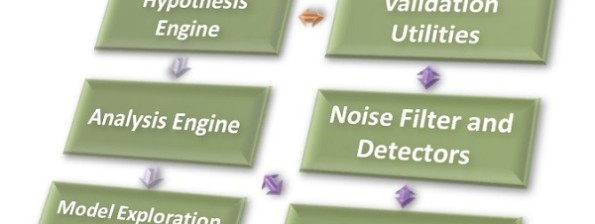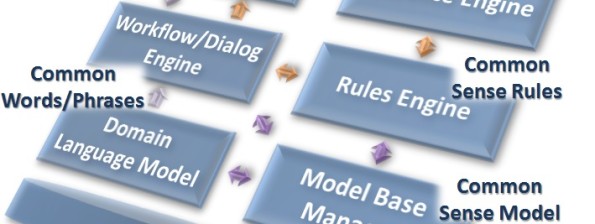Category Archives: Enterprise Applications
23 Feb Inference in Knowledge Apps

In Section 5 we discussed different kinds of knowledge, including existential or hierarchical knowledge and causal knowledge. In Section 7 we discussed modeling approaches and search techniques that could be applied to any kind of knowledge. We saw that causal knowledge can be modeled as chains of causes and effects, and that existential knowledge can be […]
08 Feb Just In Time Knowledge

One of the beautiful things about the human brain is it’s adaptability: people can “change” their minds at the last minute based on the changing situation (context). This is not trivial, but I believe that it is one of the characteristics of human cognition that is relatively straightforward to mimic in computer programs and apps. In […]
26 Jan Give Me Smart Requirements

I know how to solve this problem! I’ll just blast it to smithereens – Fire – Aim – Ready. Artificial Intelligence (AI) has been explored and developed in universities and startup companies throughout the developed world for decades, but is still struggling to reach the mainstream. There are many companies that effectively use intelligent processes and […]
14 Jan Segregating Layers of Intelligence

Layered Architectures Layers appear regularly in my blog, whether it’s layers of the brain, layers of processing nodes in artificial neural networks or layers in systems architectures. Layering embodies important patterns in the inexorable move toward a knowledge economy with knowledge systems. In today’s post, I’m going to talk about what layering brings to enterprise […]
07 Jan What’s in a Decision

A decision by any other name would feel as risky Take any class of software and you can find some structures or processes that you can associate back to some human-like structure or processes. To keep this more simple and relevant, I am focused on looking at systems that are fundamentally designed to replicate more […]
29 Dec Unhuman Expertise

Artificial Intelligence has suffered from a persistent scale problem: up to now, many techniques have been shown to work well and reliably in narrowly defined domains, but outside the domains of their expertise, they fall apart very quickly. No techniques of which I am aware, have exhibited common sense in the way we expect humans […]
27 Dec Visualization Deception

The differences between the way computers think about things and the way humans process information can create significant dissonance and opportunities for misunderstanding. Both are in the business of finding answers, but approaches differ. While for humans, things we see with our eyes may be earliest and foremost in our thought process, it is almost always the […]







